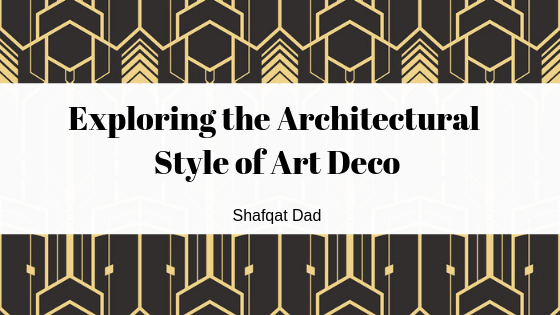When you think of Art Deco, you think of rich colours and pronounced curves. This style of architecture is a big departure from older styles, such as Gothic and Victorian, that were more formal. But how did Art Deco become popular, particularly with the wealthy? Art Deco made its debut at the 1925 Exposition Internationale des Arts Décoratifs et Industriels Modernes, a world-fair type of event that lasted six months in Paris. What is surprising is that it grew out of the Nouveau Art movement. This movement was everything that was art, from nature to contemporary. Thus, Art Deco borrowed some of the elements of Art Nouveau, such as the use of natural materials, sleek lines, and bold colours. It also reflected the changes in technology that were taking place in the 1920s and 1930s with a modern look.
The bold colours are the first to be recognized. Their brightness draws the eyes to them and then the geometric lines and shapes. The colour palette includes black, yellow, green, cream, beige, red and silver. The colours can be used as accents, such as on windows, doors, trim and ironwork. They can also be used in a much bolder statement as the colour for entire buildings. There are geometric shapes that can be seen in stairways, windows, lighting as well as in signs and decorative elements. The elaborate designs and exotic materials created luxury and glamour that the wealthy quickly adopted. There are many exceptional examples of Art Deco in the UK, such as the Hoover Building, the Midland Hotel, and the Carreras Cigarette Factory.
The Hoover Building, Ealing — A branch of Hoover, an American vacuum cleaner company, the building was built in 1931. The exterior has green windows, red accents, and beige colour. You can see the geometric shapes in the railings, floors and the lights. In 2015, the building was converted into 66 apartments. Design studio Interrobang kept the Art Deco style and the original staircase. The windows have a modern look while the floors are decadent in materials and designs.
The Midland Hotel, Morecambe — Many forget that Art Deco also incorporates curves and smooth surfaces. This hotel is a prime example with its curved structure and chrome railings. The stark white exterior colour projects modernism while the reds and browns of the interior give off a look of indulgence and luxury. The mix of materials, such as stone and leather, continues the modernism design throughout.
The Carreras Cigarette Factory, London — Now known as Arcadia Works, this former cigarette company embraces the Art Deco style with its mixture of geometric shapes, such as columns and squares. There are Egyptian influences, another characteristic of Art Deco, that give the building a “royal” atmosphere. Greens, blues, browns, and blacks decorate the facade along with two large black cats. Also, the factory was the first to implement air conditioning and dust extraction in Britain.

